Selected portions of the BloostonLaw Telecom Update, and/or the BloostonLaw Private Users Update — newsletters from the Law Offices of Blooston, Mordkofsky, Dickens, Duffy & Prendergast, LLP are reproduced in this section with the firm's permission. 
| BloostonLaw Telecom Update | Vol. 17, No. 22 | June 4, 2014 |
Form 481 Filing Deadline on the Horizon: July 1, 2014 The FCC’s Form 481 is due on July 1, 2014, and must not only be filed with USAC, but also with the FCC and the relevant state commission and tribal authority, as appropriate. It is expected that this year (like last year), filers will be required to seek confidential treatment separately with the FCC and the relevant state commission and tribal authority if confidential treatment was desired. Because this entails manual filing, it can be cumbersome. BloostonLaw is available to assist filers in all aspects of Form 481 filing procedures, including requesting confidential treatment and obtaining proof of filing. Headlines 
It’s Official: FCC Adopts Smaller License Sizes, Rural Carriers Have a Shot in the 600 MHz Auction On Monday, the FCC released a 465-page Report and Order ( FCC 14-50 ) with rules to implement the 600 MHz broadcast television spectrum incentive auction. We are still reviewing the fine print, but the Incentive Auction R&O represents a significant win for rural and competitive wireless carriers, who now have a more realistic shot at obtaining 600 MHz geographic area licenses due to the Commission’s decision to adopt without changes a joint Partial Economic Area (PEA) licensing proposal advocated by CCA, NTCA, RWA and the Blooston Rural Carriers (“PEA Coalition”). The Incentive Auction R&O adopted a 600 MHz band plan consisting of paired five megahertz “building blocks” to facilitate participation by smaller carriers and new entrants, as well as tiered small business bidding credits similar to those available in recent 700 MHz band auctions. Population-based buildout requirements applicable to 600 MHz licenses are significantly less stringent than the geographic buildout requirements imposed on many 700 MHz licenses, with new 600 MHz licensees required to build out to 40 percent of the population in their service areas within six years and to 75 percent of the population by the end of their initial license terms of 12 years. Subsequent license terms will be 10 years. The 600 MHz Broadcast Incentive Auction is currently scheduled to begin in the summer of 2015. A map showing the boundaries of the 416 PEAs is available HERE . A cross reference of US Counties and their corresponding PEA is available HERE . We will be happy to provide a PEA cross reference list in spreadsheet format upon request. In adopting the Joint PEA Proposal, the Commission rejected its initial proposal to license the 600 MHz band on the basis of 175 Economic Areas (EAs) ( EA MAP ). This would have been a death knell for small and rural carrier access to 600 MHz spectrum because EAs lump rural and urban markets together. The Commission then relied on arguments raised by the Blooston Rural Carriers and others to fend off a flurry of last-minute changes to the Joint PEA Proposal sought by Verizon. “As Blooston notes, the Verizon PEA Proposal has ‘little in common with geographic areas where rural and competitive carriers currently offer wireless service,’” wrote the FCC. “In addition, Blooston argues that using the MSAs in the Joint PEA Proposal could increase service to rural areas as compared to Verizon’s proposal.” While the Blooston Rural Carriers and other PEA Coalition members would have preferred licensing the 600 MHz band on the basis of 734 Cellular Market Areas (CMAs) ( CMA MAP ), which are a combination of Metropolitan Statistical Areas (MSAs) and Rural Statistical Areas (RSAs), the unusual complexity of the broadcast incentive auction necessitated a forward licensing scheme with significantly fewer licenses. PEAs offer a compromise between EAs and CMAs because they are smaller than EAs, yet “nest” (or fit) within EAs, and can be easily aggregated into larger areas. Because the MSA and RSA boundaries may more closely fit many wireless providers’ existing footprints, and in particular, smaller, non-nationwide providers, the Commission concluded that the PEA licensing approach “should provide a greater opportunity for all wireless providers to acquire spectrum licenses in their service areas.” The FCC also adopted a more reasonable buildout obligation (based on population coverage rather than geographic coverage), and small business bid credits (another proposal advocated by the Carriers). The FCC declined to adopt the Blooston Rural Carriers’ request for a rural telco bid credit (but at least we tried!). The Incentive Auction R&O also represents a significant win for advocates of greater unlicensed spectrum use. It makes additional prime spectrum from the 600 MHz Band guard bands available for unlicensed devices nationwide. This should create opportunities for manufacturers of unlicensed devices and providers of unlicensed band services. Depending on the amount of spectrum repurposed through the incentive auction, a total of 14 to 28 megahertz of guard band spectrum will be available for unlicensed use in every market. In addition, the Commission will make an additional six megahertz of spectrum available by allowing unlicensed use of channel 37 at locations where it is not in use by channel 37 incumbents, subject to the development of the appropriate technical parameters to protect the incumbent medical telemetry and radio astronomy users from harmful interference. The Commission has said it plans to initiate a rulemaking proceeding soon to consider changes to its existing Part 15 rules to facilitate unlicensed use of the television bands, 600 MHz Band guard bands and channel 37. TV Band White Space devices may continue to operate on channels allocated and assigned for primary television services, consistent with current FCC rules. The Commission expects a significant amount of spectrum to be available for continued White Space use, particularly outside of the central urban areas of the largest television markets. FCC Updates Mobile Spectrum Holdings Policies and Rules In tandem with the Incentive Auction R&O, the FCC on Monday released a Report and Order (FCC 14-63) with details on its revised spectrum screen and new policies and rules with respect to mobile spectrum holdings. These policies and rules adopted in the Mobile Spectrum Holdings R&O are especially important in light of the upcoming AWS-3 auction (Auction 97), scheduled to begin November 13, 2014, and the 600 MHz Broadcast Incentive auction, scheduled for the summer of 2015. Auction 97 will make available licenses for spectrum that is contiguous with and complimentary to AWS-1 band licenses, and may be one of the last opportunities for our clients to obtain wireless spectrum for geographic areas as small as Cellular Market Areas (CMAs). The 600 MHz Broadcast Incentive auction will make available Partial Economic Area (PEA) licenses for “low-band” spectrum ( i.e., below 1 GHz) that is especially valuable due to its favorable propagation characteristics and relative scarcity as compared to “high-band” spectrum. The FCC uses the spectrum screen in its review of proposed license sales and transfers of control, to determine whether a transaction will service the public interest, convenience, and necessity (and in particular, whether there will be an adverse impact on competition). The Commission has added new spectrum bands that it views as being both suitable and available for the provision of mobile wireless services. These bands are: - 40 megahertz of AWS-4;
- 10 megahertz of H Block;
- 65 megahertz of AWS-3, when it becomes available on a market-by-market basis;
- 12 megahertz of BRS;
- 89 megahertz of EBS; and
- The total amount of 600 MHz spectrum that is eventually auctioned in the Incentive Auction.
At the same time, the Commission has subtracted from the screen the following bands: - 12.5 megahertz of SMR; and
- 10 megahertz that was the Upper 700 MHz D Block (which has been reallocated to public safety)
Enlarging the spectrum screen, on its own, tends to increase the total amount (but not percentage) of mobile wireless spectrum that an individual company may own/control in a given market. As a result, Sprint, which owns a majority of the 2.5 GHz BRS licenses and leased EBS spectrum nationwide, would look a lot more spectrum-rich than it did under the previous spectrum screen, which did not include the BRS and EBS bands. Ironically, Verizon and AT&T may look less spectrum-rich in certain transactions as a result of the new mix of spectrum bands included in the screen. Currently, the trigger for more detailed public interest analysis occurs when a wireless provider holds approximately 1/3 or more of the available spectrum in a given market. Under the revised screen, the FCC will continue to use this 1/3 spectrum screen threshold and will evaluate transactions on a case-by-case basis. With respect to low-band spectrum, Commission will continue to use a case-by-case review for transactions involving spectrum below 1 GHz, as described above. Aggregation of approximately 1/3 or more of available low-band spectrum in a market will be an “enhanced factor” in the Commission’s competitive analysis of a proposed transaction. According to an FCC Fact Sheet, Verizon and AT&T hold a combined share of approximately 70% of all low-band spectrum licenses, while Sprint and T-Mobile hold a combined share of approximately 15% of all low-band spectrum licenses. Thus, future low-band spectrum transactions involving Verizon and/or AT&T could get added FCC scrutiny if the screen is also triggered. Finally, the Commission adopted specific policies that will apply to the AWS-3 and 600 MHz Incentive Auctions. In light of the relative abundance of high-band spectrum and current holdings by multiple providers, the FCC chose not to impose any auction-specific limits on AWS-3 spectrum. With respect to the Incentive Auction, the FCC determined that “reasonable spectrum aggregation rules” were necessary to ensure no one or two providers could dominate the 600 MHz band. In this regard, the rules establish a market-based reserve of up to 30 megahertz of spectrum targeted for providers that currently hold less than 1/3 of suitable and available low-band spectrum in a license area. The reserve rules are very complex, but would essentially kick in after the auction raises enough spectrum and revenue to help fund a new $7 billion public safety network and to compensate TV stations that had agreed to relinquish some or all of their spectrum rights. At that point, any nationwide provider that holds approximately 1/3 or more of available low-band spectrum in a license area would be able ineligible to bid on any reserved spectrum in that area, but they could continue to bid on all unreserved spectrum in that area. Non-nationwide providers (rural and regional carriers) would not be subject to the reserve, and would be able to bid on both reserved and unreserved spectrum in all license areas. Industry reactions to the revised spectrum holdings rules were mixed, but for the most part supportive of the Commission’s plan. Verizon had strongly urged the FCC to expand the spectrum screen by including the 2.5 GHz BRS/EBS bands, and it seemed to have gotten its wish. “For far too long, the screen has been woefully under-inclusive,” wrote Verizon Senior VP Craig Sillman in a public policy blog. “By counting all providers’ broadband spectrum equally, the FCC’s decision will help ensure that all carriers have the opportunity to acquire the spectrum necessary to serve their customers.” While AT&T had voiced displeasure with any idea of auction restrictions, Jim Cicconi, AT&T’s vice president of legislative affairs said in a statement that “the compromise framework will give AT&T a fair shot to participate at auction for a meaningful 600 MHz footprint.” Jonathan Foxman, President & CEO, MTPCS, LLC d/b/a Cellular One and CCA Chairman of the Board, said in a statement “The Commission’s announcement to auction fully interoperable 600 MHz spectrum in 5×5 MHz building blocks and, particularly, in smaller geographic license sizes is a real win for competition and for consumers. Reserving a small amount of spectrum for competitive carriers will help to increase access to capital and participation in the auction.” Sprint Vice President Lawrence Krevor issued a statement recognizing that the Incentive Auction rules would enhance the ability of small carriers to bid on critical low-band spectrum, but expressing disappointment because “the Commission did not recognize the varying impact of commercial spectrum bands on broadband competition. As a result, the revised spectrum screen will not help the Commission identify transactions that warrant a more detailed competitive analysis.” The FCC's revised mobile spectrum holdings rules are based on current market structure, meaning that if Sprint acquires T-Mobile, for example, the rules could be revisited and may be rewritten. Update on the Communications Act Update Effort At the beginning of the year, U.S. House Energy and Commerce Committee Chairman Fred Upton (R-MI) and Communications and Technology Subcommittee Chairman Greg Walden (R-OR) launched an effort to rewrite the Communications Act. As a first step, the congressmen are seeking public comment through questions proposed in an ongoing series of white papers targeted at specific areas of the issue. The first white paper focused on broad thematic concepts for updating the Communications Act, and received more than 100 comments from all facets of the industry, including the likes of AT&T, Verizon, Microsoft, Google, and more. The second white paper sought comment on spectrum policy, asking questions on how to modernize the spectrum licensing, including the role of unlicensed spectrum, efficient use of spectrum by government entities, and other issues related to the management of limited spectrum. The latest white paper, released in May of 2014, focuses on competition policy and the role of the Federal Communications Commission. It seeks public comment on ten questions: - How should Congress define competition in the modern communications marketplace? How can we ensure that this definition is flexible enough to accommodate this rapidly changing industry?
- What principles should form the basis of competition policy in the oversight of the modern communications ecosystem?
- How should inter-modal competition factor into an analysis of competition in the communications market?
- Some have suggested that the FCC be transitioned to an enforcement agency, along the lines of the operation of the Federal Trade Commission, rather than use broad rulemaking authority to set rules a priori. What role should the FCC play in competition policy?
- What, if any, are the implications of ongoing inter-modal competition at the service level on the Commission’s authority? Should the scope of the Commission’s jurisdiction be changed as a result?
- What, if any, are the implications of ongoing inter-modal competition on the role of the FCC in spectrum policy?
- What, if any, are the implications of ongoing inter-modal competition at the service level on the FCC’s role in mergers analysis and approval?
- Competition at the network level has been a focus of FCC regulation in the past. As networks are increasingly substitutes for one another, competition between services has become even more important. Following the Verizon decision, the reach of the Commission to regulate “edge providers” on the Internet is the subject of some disagreement. How should we define competition among edge providers? What role, if any, should the Commission have to regulate edge providers — providers of services that are network agnostic?
- What regulatory construct would best address the changing face of competition in the modern communications ecosystem and remain flexible to address future change?
- Given the rapid change in the competitive market for communications networks and services, should the Communications Act require periodic reauthorization by Congress to provide opportunity to reevaluate the effectiveness of and necessity for its provisions?
The comment window for the third white paper is open until June 13, 2014. Carriers interested in filing comments should contact the firm without delay. Bureau Issues Public Notice to Refresh the Record in 2010 Broadband NOI The FCC’s Wireline Competition Bureau has released a Public Notice seeking to refresh the record in the Framework for Broadband Internet Service proceeding (GN Docket No. 10-127). Comments are due July 15, 2014 and reply comments are due September 10, 2014. As part of the FCC’s Open Internet Notice of Proposed Rulemaking released on May 15, 2014, the FCC directed the Wireline Competition Bureau to issue a public notice to refresh the record in this proceeding, which was originally initiated in 2010 by way of a Notice of Inquiry. The original Notice of Inquiry sought comment on the best legal framework for protecting and promoting the open Internet — including, among other options, Chairman Genachowski’s infamous “third way” approach that would apply a limited set of Title II obligations to broadband providers. Interested parties should note that this is a separate proceeding from the Open Internet NPRM, although they cover similar topics and share comment filing deadlines. Law & Regulation 
Representative Latta Introduces Legislation Limiting FCC Authority over Broadband On May 28, Rep. Bob Latta (R-Ohio) introduced H.R. 4752 in the House of Representatives, which would amend the Communications Act to limit the authority of the FCC over providers of broadband Internet service. Specifically, the bill would amend Section 3 of the Communications Act (codified in 47 USC §153) by amending the definitions of “common carrier” (§153(11)), “information service” (§153(24)), “telecommunications carrier” (§153(51)), and “telecommunications service” (§153(53)) by adding at the end: “Such term does not include a provider of an information service or of advanced telecommunications capability (as defined in section 706 of the Telecommunications Act of 1996 (47 U.S.C. 1302)) when engaged in the provision of such service or capability.” The bill would also add a definition for “broadband internet access service”: The term ‘broadband Internet access service’ means a mass-market retail service by wire or radio that provides the capability to transmit data to and receive data from all or substantially all Internet endpoints, including any capabilities that are incidental to and enable the operation of the communications service, but excluding dial-up Internet access service. Broadband Internet access service is an information service, and includes a service utilizing advanced telecommunications capability (as defined in section 706 of the Telecommunications Act of 1996 (47 U.S.C. 1302)).” The bill also purports to embody congressional findings that Title II “was designed for a the monopoly telephone system in 1934” and that its imposition on broadband would “severely harm broadband investment and create myriad negative unintended consequences,” and that previous Commission rulings classifying broadband as an information service “unleashed tens of billions of dollars of investment in the Nation’s broadband networks, investment that would not have been made if broadband services were subject to common carrier requirements.” The bill has been referred to the Committee on Energy and Commerce. Filing Fee Effective Date Revised Due to Publication Error According to a Public Notice released June 4, the effective date of the FCC’s increased application fees has been pushed back. The increase will now take effect on July 3, 2014. Due to an inadvertent error, the last page of the order increasing the fees was left off the May 7, 2014 Federal Register publication. As a result, a correction to the Federal Register Summary was published on June 3, 2014, upon which the effective date of the order must now be based. The FY 2014 Fee Filing Guides for all the respective Bureaus will be posted at the “Application Processing Fees” link located at www.fcc.gov/fees before this July 3, 2014 effective date. The Commission will begin collecting the revised FY 2014 application fees on July 3, 2014 and will post a public notice prior to that date. Comment Deadline Set for Citizens Broadband Radio Service FNPRM A summary of the Further Notice of Proposed Rulemaking Regarding the Citizens Broadband Radio Service in 3550-3650 MHz, GN Docket No. 12-354, was published in the Federal Register, establishing the comment deadlines for that item. Comments are due July 14 and reply comments are due August 1. As we reported in the April 23, 2014 edition of the BloostonLaw Telecom Update, the FCC has proposed a three-tiered access and sharing model comprised of federal and non-federal incumbents, priority access licensees, and general authorized access users. Federal and non-federal incumbents would be protected from harmful interference from Citizens Broadband Radio Service users. Targeted priority access licenses would be made available for a variety of uses, including mobile broadband. General authorized access use would be permitted in a reserved amount of spectrum and on an opportunistic basis for a variety of consumer or business-oriented purposes, including advanced home wireless networking. Access and operation within the 3.5 GHz band would be managed by a spectrum access system, a dynamic database or databases that incorporates technical and functional requirements necessary to manage access and operations across the three tiers. In addition, the FNPRM seeks comment on technical, auction, and allocation rules. Operate a Pirate Radio Station? . . . The FCC Will Happily Take Your Money This week, the FCC released three monetary forfeitures totaling $60,000 for operation of pirate FM broadcast stations. While these situations involved the FM broadcast band, the FCC is equally protective of its other radio spectrum due to the potential for harmful interference to vital communications, including public safety communications, and — simply — because it is illegal. The three cases this week involve egregious acts of non-compliance with the FCC’s Rules, which warranted significant increases in the base amount of the forfeiture. In each case, the offending party had been warned at least once that they were operating a pirate station and that the operation should cease immediately. Unfortunately, the offending parties took various positions which did not bode well for them. In the first case, Mr. and Mrs. Olenick claimed that the FCC had no jurisdiction because they have no “commercial nexus” with the Commission. In particular, the Olenicks stated they “specifically deny that [they] are fiduciaries to anyone or anything for which any part of Title 47 is now or has ever been part of any trust indenture or agreement.” The FCC nevertheless found that the Olenicks were subject to Section 301 of the Communications Act, which regulates the transmission of radio waves in the United States regardless of whether there is any sort of “commercial nexus” with the Commission. The FCC imposed a $15,000 fine — which was $5,000 higher than the $10,000 base amount. In the second case, while Mr. Charles signed for the written warning from the FCC’s field agents, he claimed that the apartment and offending transmitter equipment inside it belonged to another individual. Through further investigation, the FCC was able to determine that it was he who had rented the apartment and was illegally operating the equipment. Notwithstanding the fact that he had been warned previously, Mr. Charles also apparently tried to mislead the FCC’s enforcement agents in their investigation. This type of conduct could have potentially led to criminal charges in addition to the $20,000 fine that the FCC has proposed in this case. Finally, in the last case, Damian Anthony Ojouku Allen thought it would be perfectly appropriate for him to operate a pirate radio station on the same frequency for which he had been previously been fined — an act which the FCC found demonstrated a deliberate disregard for the Commission’s authority and rules, and justifying a “significant $25,000 penalty.” If you receive interference to your operations, please contact our office so that we can assist you with its resolution. Industry 
C Spire Promotion Highlights Wireless Priority Service for First Responders Industry publication Telecompetitor has drawn attention to C Spire’s new promotion of Wireless Priority Service (WPS), noting that the carrier’s action highlights an important emergency wireless system access service of which many wireless customers may be unaware. WPS was developed for carriers to allow first responders to have priority access to the wireless system in times of emergency, such as terrorist attacks or other natural or man-made disasters. It places first responders first in line to make a call whenever capacity is freed up, due to the completion of calls by other callers. To use WPS, first responders (such as fire fighters, police, emergency medical personnel and others) must first obtain authorization from the U.S. Department of Homeland Security. When the required authorization has been obtained, a first responder can sign up for WPS from a participating wireless carrier. Most major carriers offer WPS service, and it does not require use of a special phone – a standard wireless phone can be used. As Telecompetitor reports, C Spire originally offered WPS in 2009. Previously it charged authorized first responders the government-allowed maximum $10.00 one-time activation fee and the government-allowed maximum monthly service fee of $4.50 per line, in addition to the government-allowed maximum $0.75 per minute usage charge. The new C Spire promotion waives both the one-time activation fee and the monthly service fee for authorized first responders. C Spire says that it put the new pricing in place in preparation for the upcoming hurricane season. By way of background information, WPS is a White House-directed emergency wireless phone service managed by the Department of Homeland Security’s Office of Emergency Communications. In adopting its WPS policies, the federal government recognized that during emergencies, commercial wireless networks can experience congestion due to increased call volumes and/or damage to network facilities, hindering the ability of national security and emergency preparedness (NS/EP) personnel to complete emergency calls. WPS provides NS/EP personnel priority access, and prioritized processing, in all nationwide and in several regional wireless networks, greatly increasing the probability of call completion. With respect to eligibility to participate in the service, WPS supports Federal, State, local, tribal and territorial governments; critical infrastructure sectors in industry; and non-governmental organizations in performing their NS/EP missions. Typical WPS users are responsible for the command and control functions critical to management of, and response to, national security and emergency situations, particularly during the first 24 to 72 hours following an event. WPS users typically fall under one of five categories of WPS NS/EP eligibility criteria. With respect to costs, WPS users are responsible for the commercial wireless subscription cost; equipment costs (for example, phones, chargers, etc.); WPS charges, which are in addition to those in the carrier’s commercial plan, and other feature, toll, and special service charges; and WPS charges are payable directly to the cellular provider as a component of the basic service plan. The following charges (as determined by the wireless carrier) may apply to WPS: one time WPS activation fee of no more than $10 per phone; monthly WPS service feature cost of no more than $4.50 per phone; and when WPS is invoked by dialing *272, no more than a $0.75 per minute usage fee. Calendar At-A-Glance 
June
Jun. 13 – Comments are due on Third White Paper on Communications Act Update.
Jun. 16 – ILEC Tariff filings made on 15 days’ notice are due.
Jun. 16 – Connect America Fund ICC Data Filing (Access Recovery Charge changes) is due for tariff filings made on 15 days’ notice.
Jun. 18 – Retransmission consent rules become effective.
Jun. 23 – Petitions to suspend or reject tariff filings made on 15 days’ notice are due.
Jun. 24 – ILEC tariff filings made on 7 days’ notice are due.
Jun. 24 – Connect America Fund ICC Data Filing (Access Recovery Charge changes) is due for tariff filings made on 7 days’ notice.
Jun. 26 – Replies to petitions to suspend or reject tariff filings made on 15 days’ notice are due.
Jun. 26 – Petitions to suspend or reject tariff filings made on 7 days’ notice are due.
Jun. 27 – Replies to petitions to suspend or reject tariff filings made on 7 days’ notice are due. July
Jul. 1 – FCC Form 481 (Carrier Annual Reporting Data Collection Form) is due.
Jul. 1 – FCC Form 690 (Mobility Fund Phase I Auction Winner Annual Report) is due.
Jul. 3 – FCC Application Filing Fees increase.
Jul. 14 – Comments are due on Citizens Broadband Radio Service FNPRM.
Jul. 15 – Comments are due on the Open Internet NPRM.
Jul. 15 – Comments are due refreshing the record on the 2010 Broadband NOI.
Jul. 31 – FCC Form 507 (Universal Service Quarterly Line Count Update) is due.
Jul. 31 – Carrier Identification Code (CIC) Report is due. August 
Aug. 1 – Reply comments are due on Citizens Broadband Radio Service FNPRM. September 
Sep. 10 – Reply comments are due on the Open Internet NPRM.
Sep. 10 – Reply comments are due refreshing the record on the 2010 Broadband NOI. | 














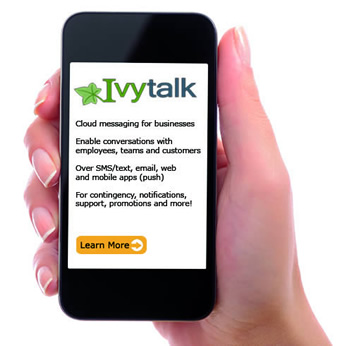
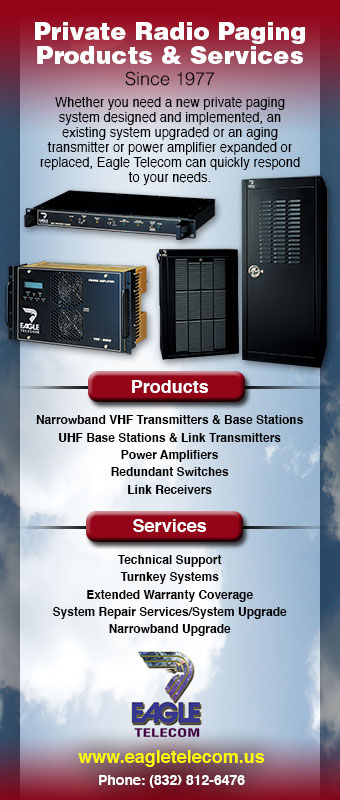

















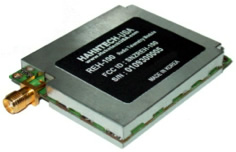







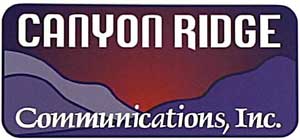






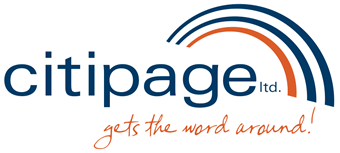









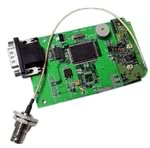


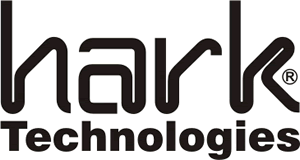
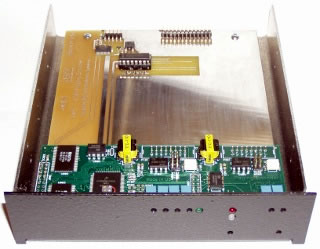

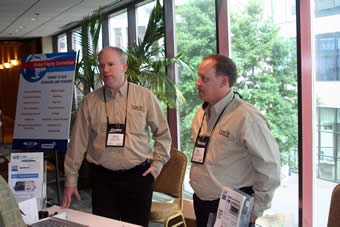 David George and Bill Noyes
David George and Bill Noyes






